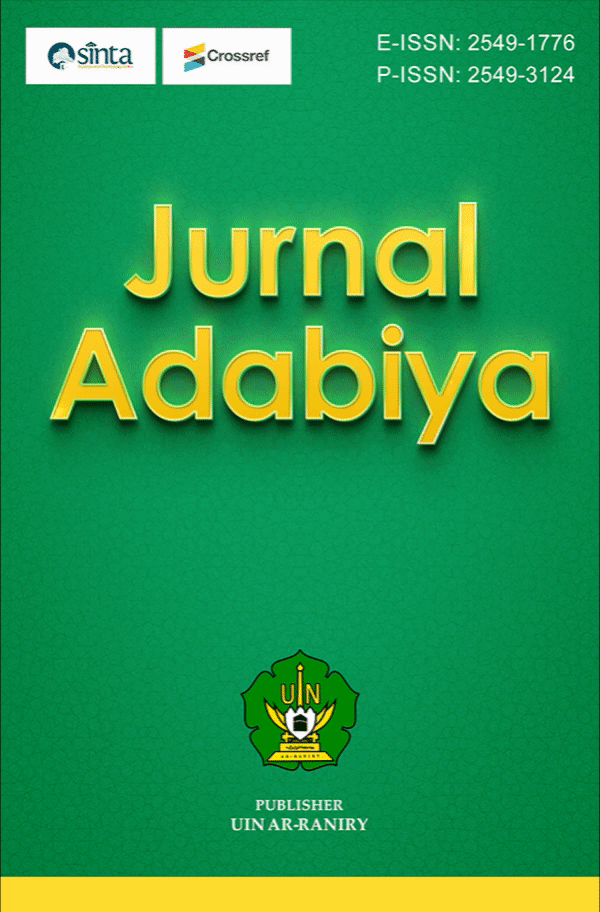References
Ayman Jamal. (2018). Film Bilal: A New Breed of Hero. https://drive.google.com/file/d/1-DWkpJrclCYmefFxE1uLedU_4fEbHE_l/view?usp=drive_link.
Berti, A., Ambarita, T., Panggabean, M. F., & Marbun, L. M. (2024). Implikatur Ekspresif Pada Acara Lapor Pak “Kiky Ngeroasting Anies Baswedan.” Jurnal Kolokasi, 1(1).
Djara Kore, K. D., Robot, M., & Budiman Jama, K. (2023). IMPLIKATUR DAN MAKNA DALAM CERITA RAKYAT KOLO MERABU DI SABU RAIJUA. Bianglala Lingustika: Jurnal Linguistik, 11(2), 52–56. https://ejurnal.undana.ac.id/index.php/bianglala
Fahlevi, A. R., & Ainusyamsi, F. Y. (2019). Pelanggaran Prinsip Kerjasama dan Implikatur Percakapan dalam Film Ibrahim Khalilullah. Hijai - Journal on Arabic Language and Literature, 2(2), 1–17. https://doi.org/10.15575/hijai.v2i2.6533
Faizah, A. R. N., & Rustono. (2017). Implikatur dalam Wacana Stand Up Comedy Indonesia Sesi 4 Dodit Mulyanto di Kompas TV. Jurnal Sastra Indonesia, 6(1). http://journal.unnes.ac.id/sju/index.php/jsi
Fauzi, A. I., Al-Muhammady, F. H., & Maki, A. (2020). Fenomena Implikatur Percakapan Dalam Film Animasi Salahuddin Al Ayyubi Perspektif Grice (Kajian Pragmatik). SEMNASBAMA (International Conference of Students on Arabic Language) VI.
Firdausi, I. W. (2019). Implikatur percakapan dalam film 5 cm. Jurnal Bahasa dan Sastra Indonesia, 7(4).
Ghony, M. D., & Almanshur, F. (2012). Metode Penelitian Kualitatif. Ar-ruz Media.
Habibah, S. U. (2022). Implikatur Percakapan dalam Film Animasi Qishotu Hayati AL-Imam AL-Bukhori. Al-Fathin: Jurnal Bahasa dan
Sastra Arab, 5(Vol 5 No 02.
Hardian, N. L. (2019). 6 Fakta Film Kartun Bilal bin Rabbah, Diangkat dari Kisah Nyata.
Horn, L. R., & Ward, G. (2006). The Handbook of Pragmatics (Blackwell Handbooks in Linguistics).
Irma, C. N. (2019). Analisis Fungsi dan Bentuk Implikatur dalam Iklan Sprite: Kenyataan Yang Menyegarkan di Televisi. Hasta Wiyata, 2(2), 26–32. https://doi.org/10.21776/ub.hastawiyata.2019.002.02.03
Islamiyah, N., & Utomo, A. P. Y. (2022). Implikatur Percakapan Antartokoh dalam Film Cek Toko Sebelah Karya Ernest Prakasa. Prawara: Jurnal Pendidikan Bahasa dan Sastra Indonesia, 3(1). https://doi.org/10.20884/1.jpbsi.2022.3.1.4343
Mulyana. (2005). Kajian wacana: Teori, metode dan aplikasi prinsip-prinsip analisis wacana. Tiara Wacana Yogya.
Mustika, T. P., & Sinaga, M. (2022). Implikatur dalam Wacana tentang Covid-19 di Media Sosial. Madah: Jurnal Bahasa dan Sastra, 13(1). https://doi.org/10.31503/madah.v13i1.368
Nurgiyantoro, B. (1995). Implikatur Percakapan (Sebuah Tinjauan Psikolinguistik). Cakrawala Pendidikan: Jurnal Ilmiah Pendidikan, 14(1).
Rachmawati, Y. (2023). Implikatur Tindak Tutur Direktif Pada Peribahasa Indonesia. Jurnal Penelitian, Pendidikan dan Pembelajaran, 18(32), 1–14. https://jim.unisma.ac.id/index.php/jp3/article/view/22749/17020
Rahmah, D. A., & Pujiati, T. (2022). Implikatur Percakapan dalam Film “The Gift” Karya Hanung Bramantyo. Deiksis, 14(2), 97. https://doi.org/10.30998/deiksis.v14i2.10534
Rusminto, N. E. (2015). Analisis wacana : Kajian teoritis dan praktis. Graha Ilmu.
Suryanti. (2020). Pragmatik. Lakeisya.
Syafrian. (2022). Implikatur Percakapan Film Uwais Al-Qarni: Analisis Pragmatik. Diwan: Jurnal Bahasa dan Sastra Arab, 13(2), 132–151. https://doi.org/10.15548/diwan.v13i2.714
Yule, G. (2014). Pragmatics (kedua). Pustaka Pelajar.
Zaim, M. (2014). Metode Penelitian Bahasa: Pendekatan Struktural (Ermanto, Ed.). Sukabina Press Padang.



